Courage and Co. Ltd Bottle Stopper
A story about a Thames Mudlarking find, featuring witchcraft, cockerels and London’s larder.
For the three people who have subscribed to my Substack since 2023 and have so far seen one solitary Mudlarking post - this one is for you! After my two year hiatus, I’m finally starting to write about my finds again! I still don’t have my Mudlarking permit after frustratingly letting it expire before they overhauled the system and stopped issuing new ones - but don’t worry - I’m on the 10,000-person-long waiting list - so it should be any day now…
In the meantime, I’ll post about some of my finds from a few years ago, starting with a vulcanite bottle stopper I found near Shad Thames.
These bottle stoppers are quite commonly found on the Thames foreshore, being invented in 1872 by Henry Barrett and used for well over 100 years until the 1970s1. Henry designed the internal screw thread for the interior of the bottle neck, which finally solved the problem of keeping the fizz in fizzy drinks, so they are said to be one of the contributing factors to the boom in the beer brewing industry at the time because they were more reliable and reusable than the classic wooden stoppers that came before. They are made from vulcanite, which is a hard Indian rubber which has then been heated to 115 degrees Celsius with sulphur and linseed oil to make it more durable. Vulcanised rubber was invented (almost accidentally) by the American Charles Goodyear in 18392 and used for a wide range of products including tyres and shoe soles.
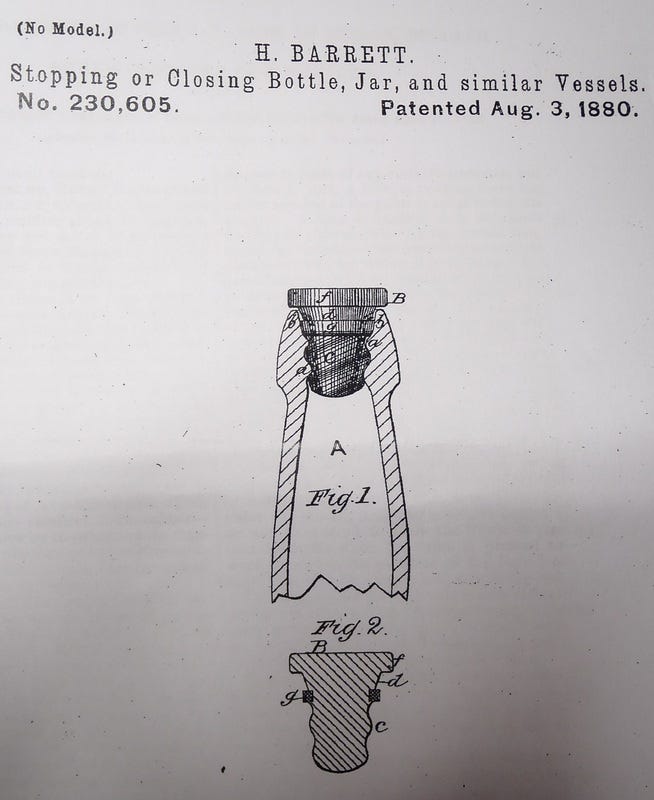
The bottle stopper is stamped with ‘Courage and Co Ltd, Brewery, London’ and I found it near Shad Thames - a really beautiful spot on the Thames foreshore under London Bridge. Many people often don’t realise you can access this area since the steps are hidden away down a small alley, so it’s quite easy to miss. The steps are underneath the Anchor Brewhouse, Horselydown. This is where the Courage and Co. Brewhouse was located, so the fact I found the bottle stopper here is no surprise.
Breweries had been commonplace in Southwark as early as medieval times, since the area provided the abundance of water needed from various streams and tributaries nearby. Interestingly, the majority of brewing in England between 1300-1500 was undertaken by women3. Women were the first brewers as far back as ancient Egyptian times, where they would make a safe, nutritious drink as an alternative to unsafe river water. These ‘ales’ were also a cheaper alternative to wine. Southwark was dominated by women brewers in the medieval period who would brew from their homes or serve their ale from cauldrons they carried around the markets. Southwark wasn’t governed by the same rules and regulations that applied to the City of London on the North side of the river, so they were free to continue this practice and gain some financial independence.
However, men came to dominate brewing from the 1600s onwards because the introduction of hops and the industrialisation of beer production required more capital, equipment, and social status than most women could access, effectively pushing them out of the trade. There was also another reason why women became less involved in the brewing industry after this time…
Aside from brewing their ale in cauldrons, they also wore tall, pointed hats so that their customers could locate them in a crowded market, and since they needed to store large amounts of grain, they also needed to have pet cats to keep mice away. Remind you of anything…? 🧙♀️. At the same time as this was happening, the Reformation movement was also taking root around the world and alongside stricter gender roles, alewives became the focus of rumours and witchcraft accusations - depicting them as corrupt, leading men astray by making them drink too much and conducting themselves in the way of the devil.4
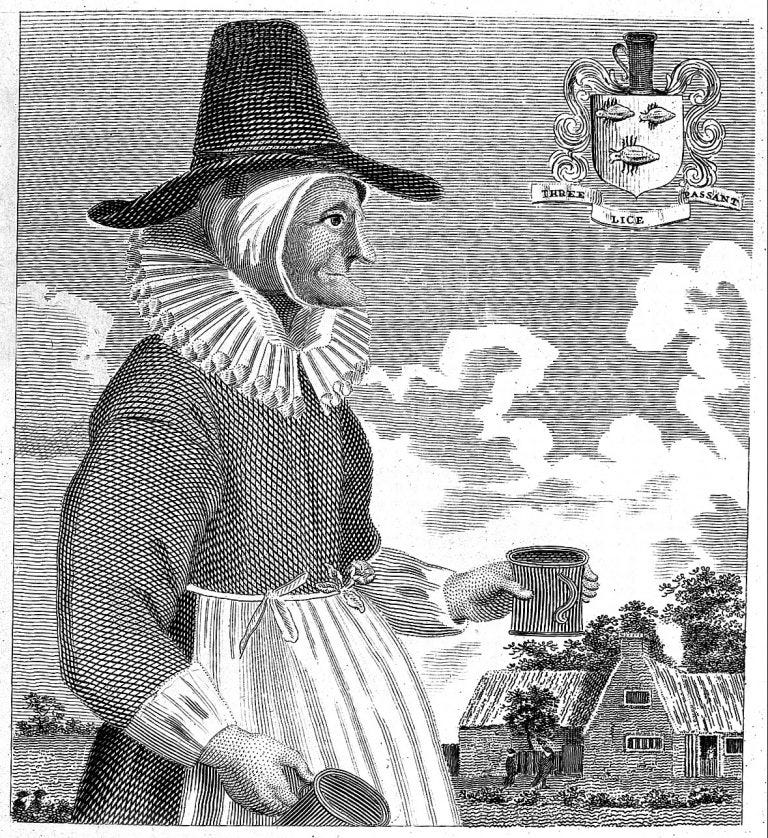
The area around Shad Thames was well known for its breweries in the 18th century, with Chaucer and Shakespeare making reference to brewing in Horselydown (the ancient name for the area - apparently because it used to be where the horses were left to graze)5. Shad Thames also hosted the largest warehouse complex in London, being referred to as the ‘larder of London’6 due to the abundance of tea, coffee, dried fruit and spice warehouses of Butler’s Wharf which were completed in 1873.
In December of 1787, John Courage purchased a small brewery on the site of the Anchor Brewhouse, Horselydown. The current building was originally built in 1789 and then rebuilt after a fire in 1891. There were three parts of the building, the Boiler House, the Brewhouse and Malt Mill, which all had their role in the brewing process.
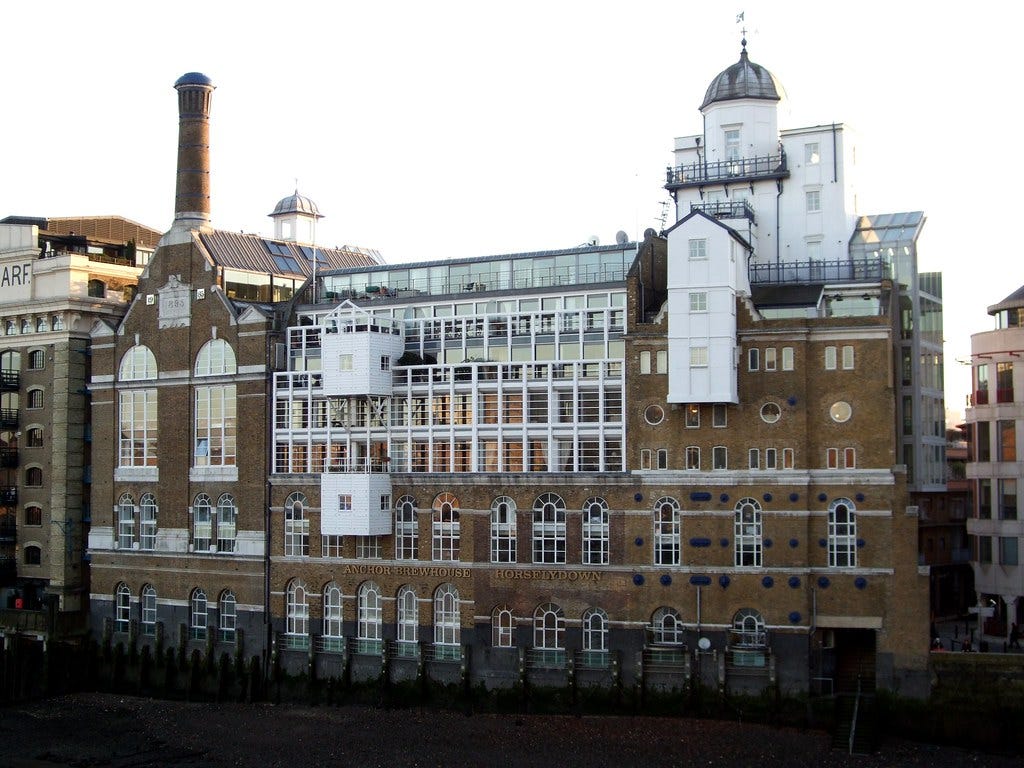
John Courage, the original founder of Courage and Co. Ltd, was an Aberdonian of French Huguenot decent, who had moved to London about 7 years earlier, leaving his mother and sister behind in Aberdeen. He was working at the time as a shipping agent for the Glasgow firm ‘Carron’. They traded out of the Glasgow Wharf (the Carron and Continental Wharfs) on the opposite side of the Thames, further downstream from the Tower of London7. The Carron Company was an ironworks established in 1759 on the Carron river in Falkirk and they supplied weapons to the Royal Navy, and later to the USA during the 1812 war against Britain as well as to Katherine the Great8. John Courage would have been responsible for handling all aspects of shipping, including freight, customs, and insurance, acting as a bridge between shippers, ship owners, and other parties involved in trade. His interests in brewing would help diversify his investments.
John Courage got off to a good start with his beer business, brewing 51 barrels of beer in his first year. However, John died suddenly just 10 years later in October of 1797 at just 36 years old. His wife, Harriet died in May of the following year at 32 years old, leaving behind their son, John who was only 10 years old and too young to take over the business. John Donaldson, the managing clerk, took over and renamed the firm to ‘Courage and Donaldson’. Below is a timeline of the evolution of the business over the next 180+ years.
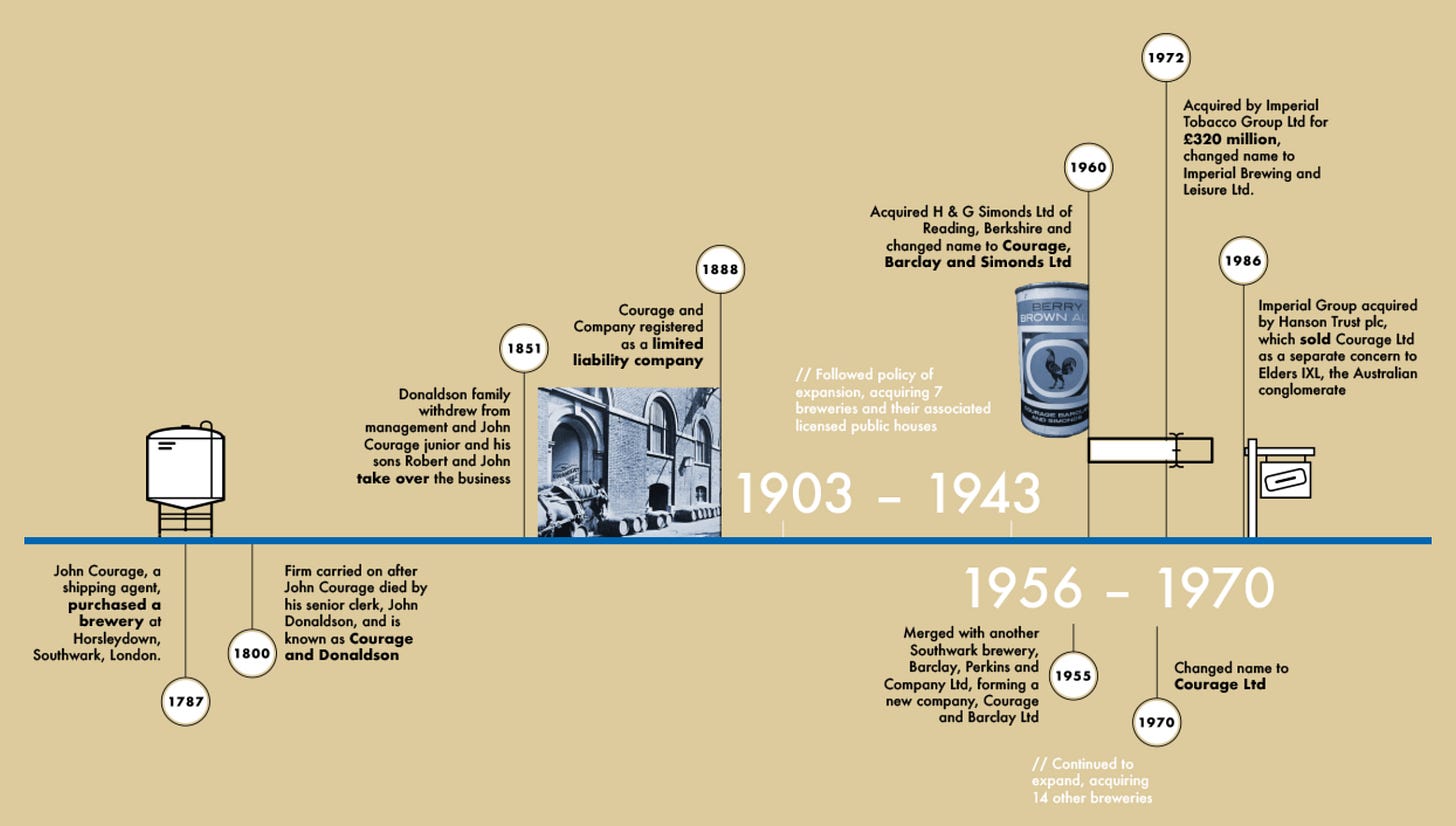
Courage was among the best known brands for over two centuries, featuring the cockerel logo, thought to be related to John Courage’s French ancestry. The rooster is seen as a symbol of French identity and patriotism, embodying courage and national pride. It is also a symbol of the French Revolution, with its peasant origins, and is widely used on French sports jerseys, coins, and various national symbols
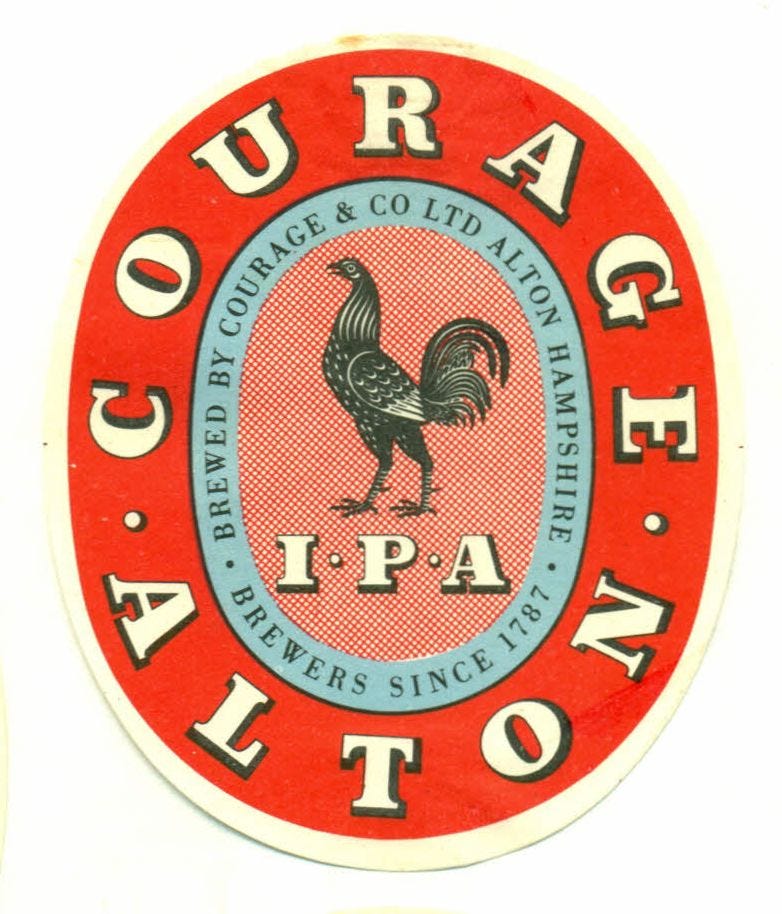
http://www.tidelineart.com/tideline-art-blog/my-story-of-vintage-vulcanite-screw-bottle-stoppers
https://www.britannica.com/technology/vulcanization
https://amudlarksdiary.com/2024/09/28/walking-the-thames-path-shad-thames-to-rotherhithe/
https://www.bellevillebrewing.co.uk/a-brief-history-of-women-in-beer/
https://bermondseystreet.london/wp-content/uploads/2020/10/Shad-Thames-Trail-2020.pdf
https://garrettwhitelock.co.uk/company-news/a-brief-history-of-shad-thames/
https://brookstonbeerbulletin.com/historic-beer-birthday-john-courage/amp/
https://en.m.wikipedia.org/wiki/Carron_Company







